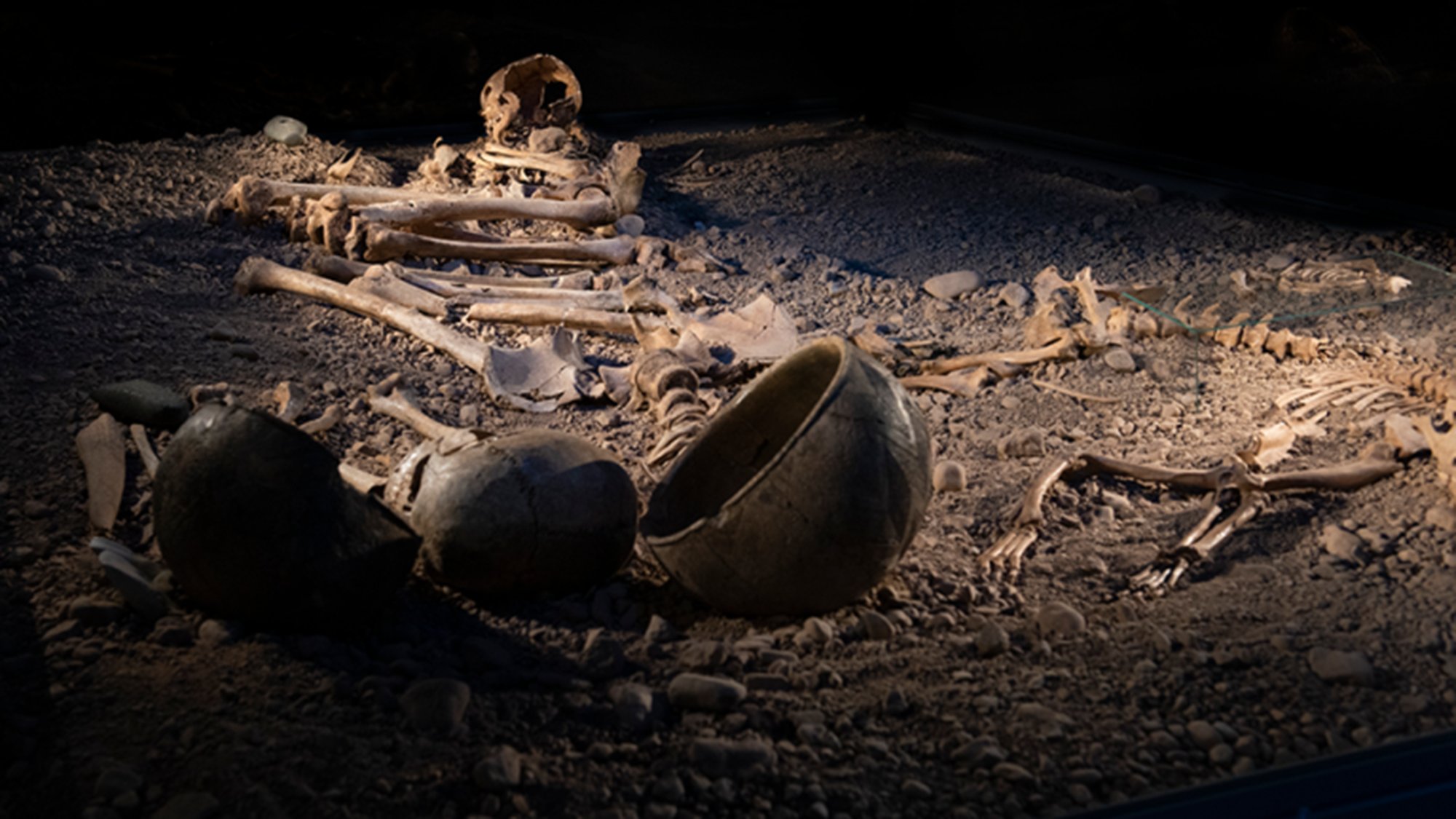

Life in the Stone Age was pretty tough for our ancestors. There were animals to fend off and track for food, new tools to make, and massive swings in climate to adapt to. Stone Age humans also faced off against potentially lethal microbes floating around just like we do today. Some dangerous microorganisms spread through kissing and eating contaminated food were found in remains of Stone Age individuals uncovered in present day Scandinavia. They offer some new clues into a major lifestyle transition in human history. The findings described in a study published March 7 in the journal Scientific Reports.
There are six major types of microbes–bacteria, archaea, fungi (yeasts and molds), algae, protozoa, and viruses. Some microbes like probiotics help keep human bodies healthy, while others can make us sick. Bacteria and viruses are the most common microbes and their genetic material is organized in DNA. This is why microbial DNA can be found in the remains of infected humans and helps scientists detect evidence of illnesses caused by bacteria and viruses.
In the study, an international team of researchers examined the different types of microbial DNA present inside the teeth of 38 individual human remains uncovered at several Neolithic settlements in Norway and Sweden. The material collected from Hummerviksholmen in southern Norway is estimated to be about 9,500 years old. The specimens from Bergsgraven in Linköping, Sweden are about 4,500 years old.
[Related: The deadliest viruses in human history, from COVID to smallpox.]
They identified 660 microbial species from these remains. Yersinia enterocolitica and Salmonella enterica were two of the most prolific bacteria found. They are both commonly associated with contracting food poisoning from undercooked meat or eating food contaminated with human feces. Even with modern medical care and food safety standards, food poisoning is still responsible for about 48 million illnesses and 3,000 deaths per year in the United States. Living during a time before life saving treatments may have made an already unpleasant human experience more deadly.
“Especially the case of Salmonella enterica shows us how difficult it [food poisoning] could be. In a Battle Axe culture burial, Bergsgraven in Linköping, we find two infected individuals, and it is actually possible that we are witnessing their cause of death,” study co-author and Stockholm University PhD student Nora Bergfeldt said in a statement. “This, and other bacterial diseases we have found among the individuals, are easily treated with antibiotics today, but back then they could be lethal.”
They also uncovered Neisseria meningitidis, which is related to meningococcal disease. It spreads through close contact between infected individuals. It is spread through the droplets of saliva release through sneezing, coughing, and kissing. Evidence of Neisseria gonorrhoeae–the bacteria that causes the sexually transmitted infection gonorrhea–was also found in the microbial DNA uncovered. These communal diseases found in microbial DNA date back to a long transition from a hunter-gatherer and nomadic lifestyle and settling down to a farming life. It’s believed that this transition began as early as 12,000 years ago.
“We know when people turned to farming in Scandinavia, but we still do not know how this change in lifestyle affected the general health,” Helena Malmström, a study co-author and biologist at Uppsala University in Sweden, said in a statement.
[Related: Plague DNA was just found in 4,000-year-old teeth.]
This transition is possibly reflected in the presence of bacterial diseases, as they saw more infections from contaminated food and water and interactions with livestock and one another. Today, illnesses like norovirus and meningitis can quickly spread in schools, dormitories, and nursing homes, and other places where large groups of people are in smaller spaces. The study also found evidence of Yersinia pestis—the bacteria that causes the plague.
“The more people interacted, [the] more possibilities to infect one another occurred,” study co-author and Stockholm University geneticist Anders Götherström, said in a statement. “But even if we do encounter bacteria with potential to impact societies such as Yersinia pestis, it is the infections that spread through food that is most prominent across the lifestyles in this study.”
